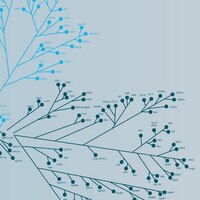Epigenetic change in pituitary tumorigenesis.
Farrell, W E and Clayton, R N
Endocr. Relat. Cancer, 10: 323-30 (2003)
2003
Show Abstract
Throughout the genome CpG dinucleotides are found at one-fifth of their expected frequency and their rarity is further marked by the fact that 70% are methylated. In contrast, CpG islands (CGI), found associated with the promoters of many genes, have maintained their expected frequency of this dinucleotide, and remain unmethylated. Inappropriate methylation of CGIs is associated with histone deacetylation and gene silencing, while methylation of CpGs outside of CGIs is associated with significantly higher mutation rates. Methylation of CGIs is a frequent event in numerous tumour types including those that arise within the pituitary gland. Several studies now show highly frequent methylation of the p16 gene that is significantly associated with loss of cognate protein and that appears to be an early change in pituitary tumorigenesis. Collectively, studies show that somatotrophinomas are an infrequent target for p16 CGI methylation. However, in this pituitary tumour subtype, loss of pRb is associated with either CGI methylation or micro-deletion within the protein-pocket binding domain. As in other tumour types loss of p16 or RB1 appear to be mutually exclusive events in non-functional adenomas and somatotrophinomas respectively. Investigation of the Death Associated Protein Kinase gene shows that loss of its protein (DAPK), a pro-apoptotic molecule, in pituitary tumours is also associated with either methylation or deletion within its associated CGI. In the case of DAPK, however, these changes segregate with invasive pituitary tumours irrespective of tumour subtype. Methylation represents a positive signal that can be detected with exquisite sensitivity; in addition, this change targets multiple genes that show tumour type specificity. Taken together, the detection of DNA methylation changes, using either a panel of predefined marker-islands, or CGI arrays, provides the opportunity to generate "methylation profiles". This new knowledge will increase our understanding of tumour biology and could ultimately aid medical management in these different tumour types, including those of pituitary origin. | 12790793
 |
Structure, activity, regulation, and inhibitor discovery for a protein kinase associated with apoptosis and neuronal death.
Velentza, Anastasia V, et al.
Pharmacol. Ther., 93: 217-24 (2002)
2002
Show Abstract
Death-associated protein kinase (DAPK) is a calmodulin-regulated serine/threonine protein kinase associated with neuronal cell death in animal models of disease. The recent determination of the 1.5A crystal structure of the catalytic kinase domain of DAPK, the discovery of amino acid sequence motifs with sites that are preferentially phosphorylated by this kinase, and the development of a quantitative enzyme activity assay provide a firm foundation for future studies into its regulation, the identification of its physiological substrates, and discovery of inhibitors. We summarize the relevant background and ongoing investigations that will increase our understanding of the role and regulation of this prototype death-associated kinase. | 12191613
 |
The DAP-kinase family of proteins: study of a novel group of calcium-regulated death-promoting kinases.
Shohat, Galit, et al.
Biochim. Biophys. Acta, 1600: 45-50 (2002)
2002
Show Abstract
DAP-kinase (DAPk) is a Ca(2+)/calmodulin (CaM)-regulated Ser/Thr kinase that functions as a positive mediator of programmed cell death. It associates with actin microfilament and has a unique multidomain structure. One of the substrates of DAPk was identified as myosin light chain (MLC), the phosphorylation of which mediates membrane blebbing. Four additional kinases have been identified based on the high homology of their catalytic domain to that of DAPk. Yet, they differ in the structure of their extracatalytic domains and in their intracellular localization. One member of this family, DRP-1, also shares with DAPk both the property of activation by Ca(2+)/CaM and a specific phosphorylation-based regulatory mechanism. The latter involves an inhibitory type of autophosphorylation on a conserved serine at position 308, in the CaM regulatory domains of these two kinases. This phosphorylation, which occurs in growing cells, restrains the death-promoting effects of these kinases, and is specifically removed upon exposure of cells to various apoptotic stimuli. The dephosphorylation at this site increases the binding and sensitivity of each of these two kinases to their common activator-CaM. In DAPk, the dephosphorylation of serine 308 also increases the Ca(2+)/CaM-independent substrate phosphorylation. In DPR-1, it also promotes the formation of homodimers necessary for its full activity. These results are consistent with a molecular model in which phosphorylation on serine 308 stabilizes a locked conformation of the CaM regulatory domain within the catalytic cleft and simultaneously also interferes with CaM binding. In DRP-1, it introduces an additional locking device by preventing homodimerization. We propose that this unique mechanism of autoinhibition, evolved to keep these death-promoting kinases silent in healthy cells and ensures their activation only in response to apoptotic signals. | 12445458
 |












